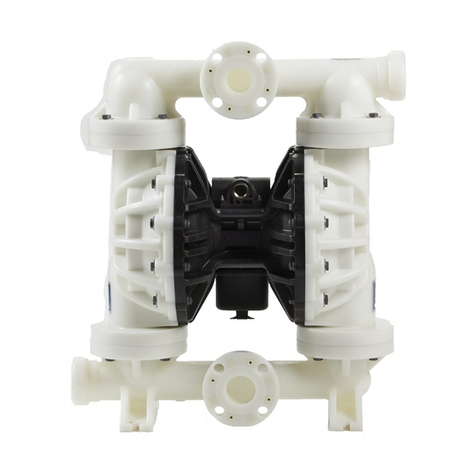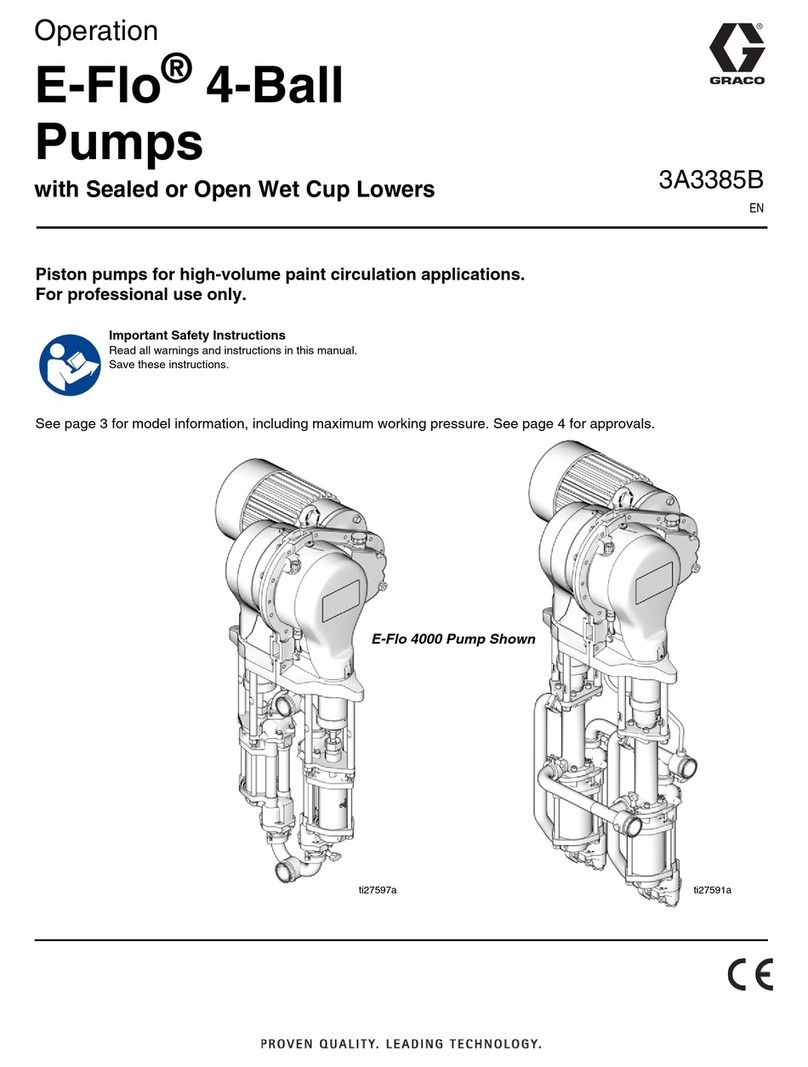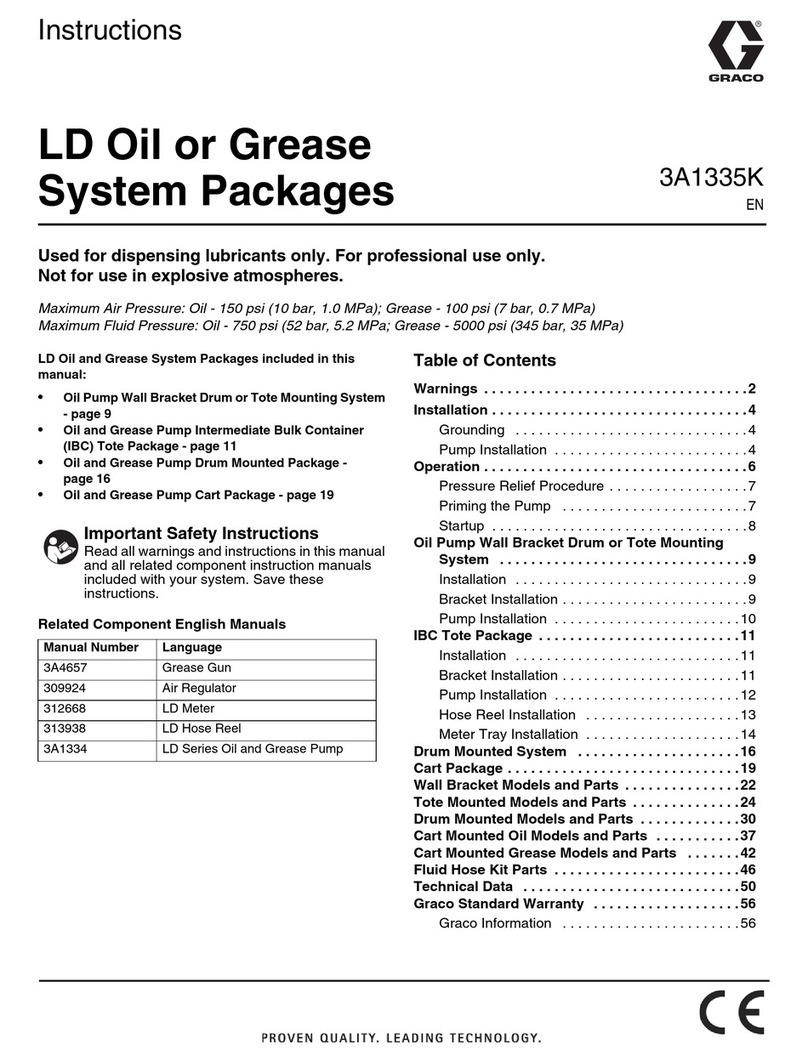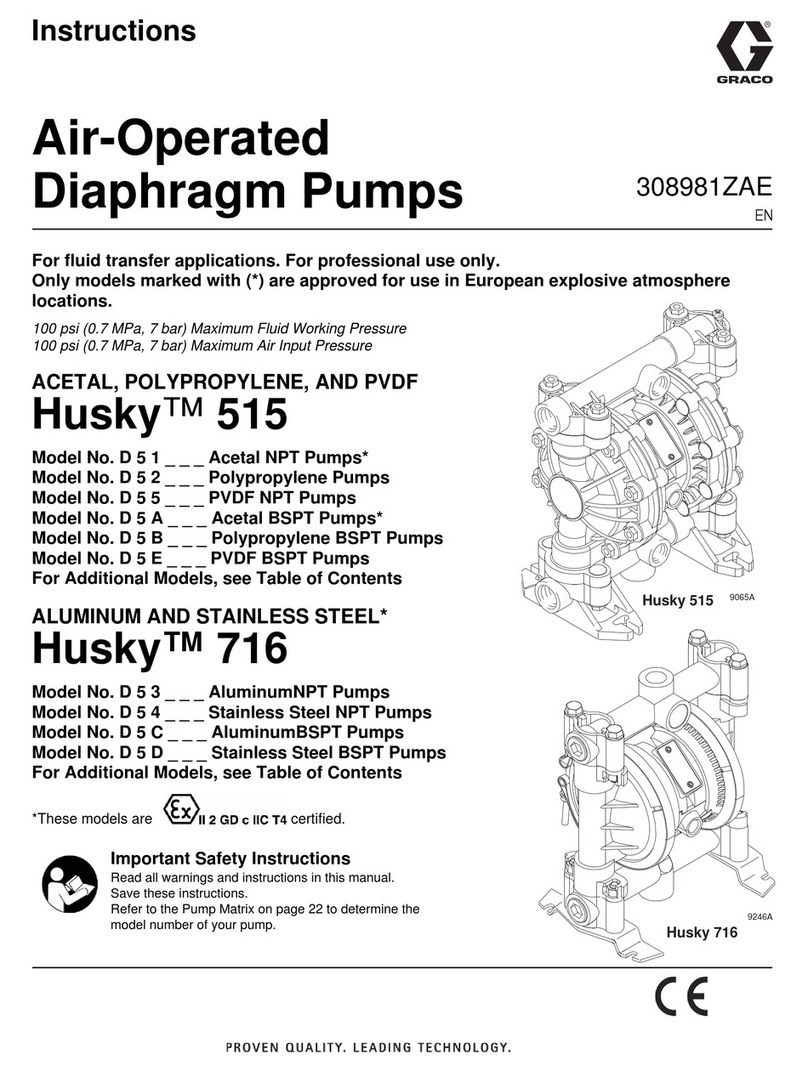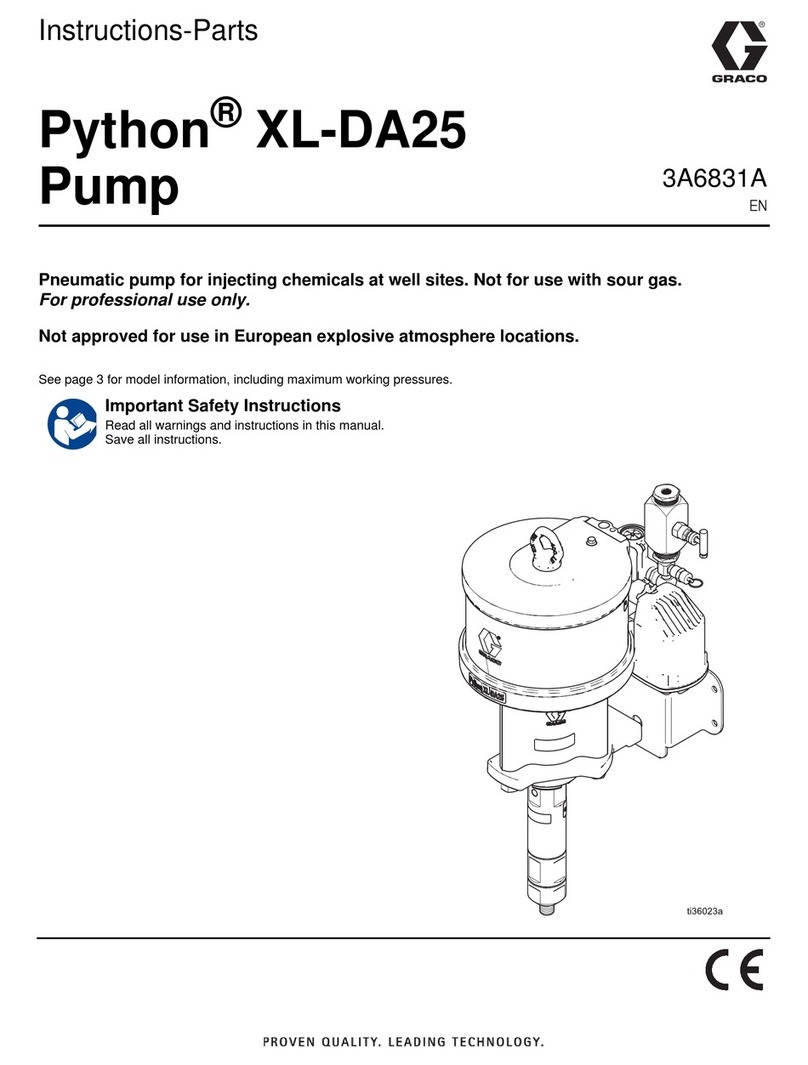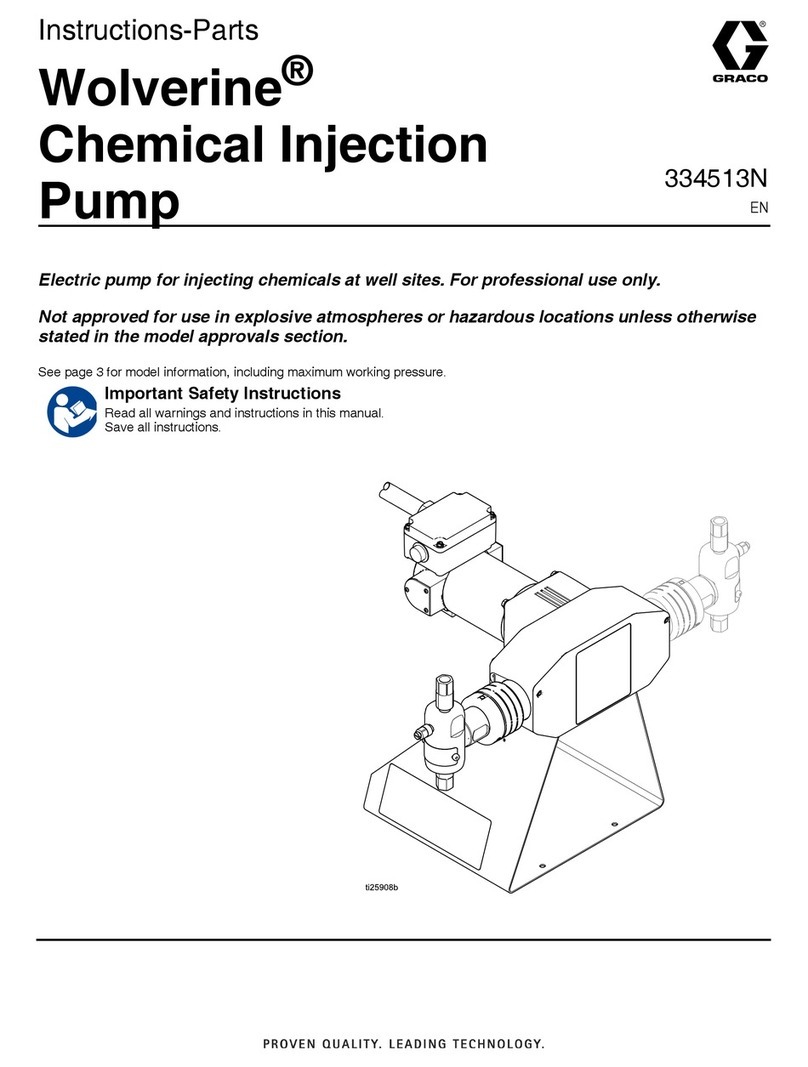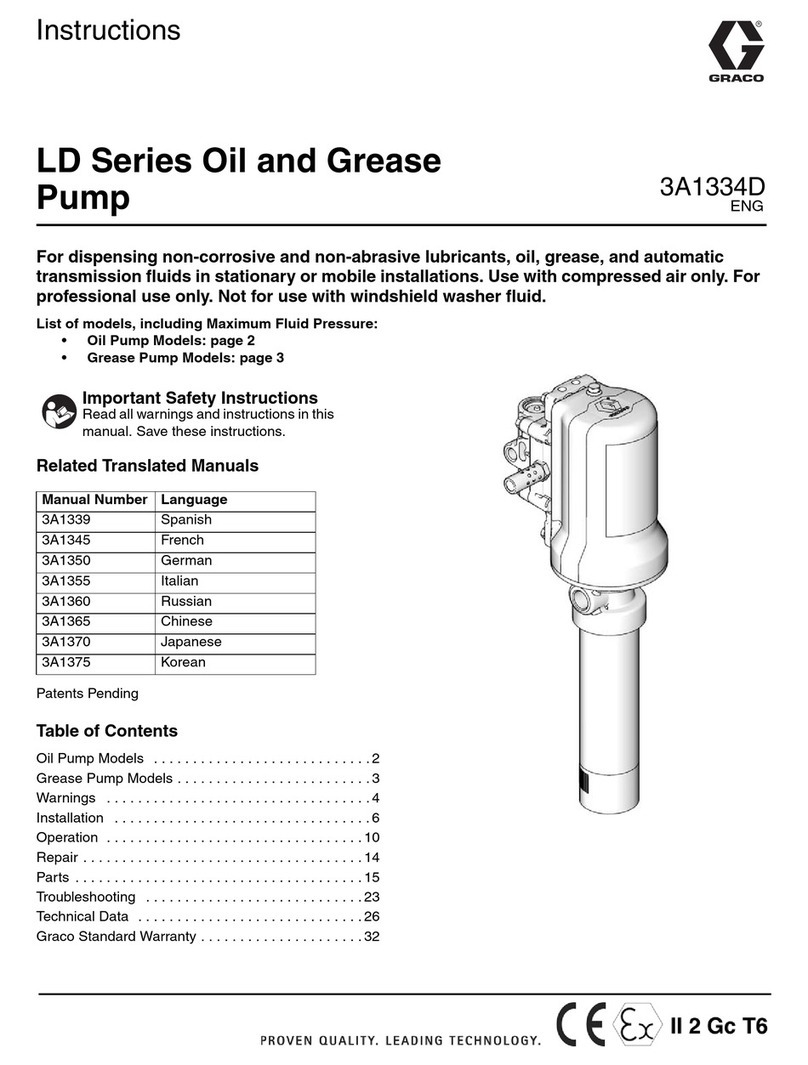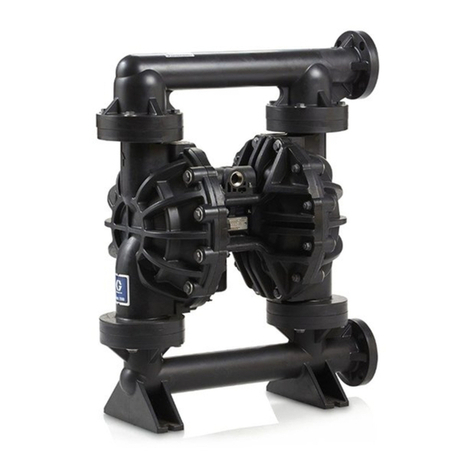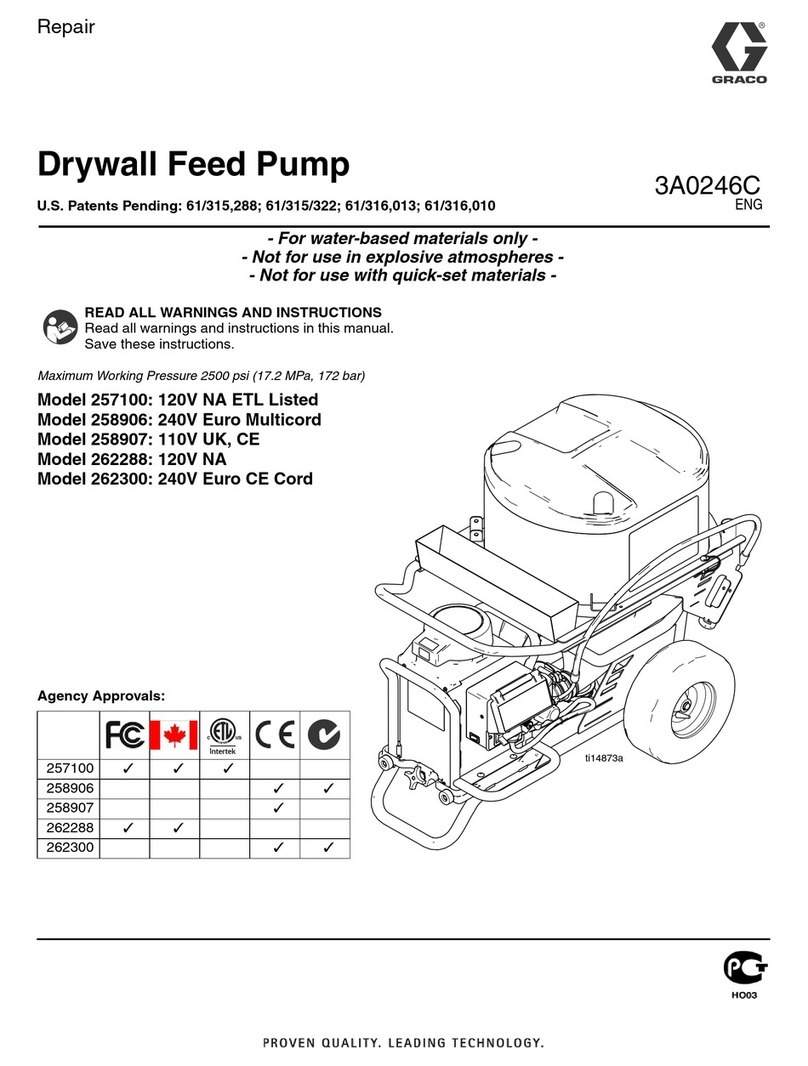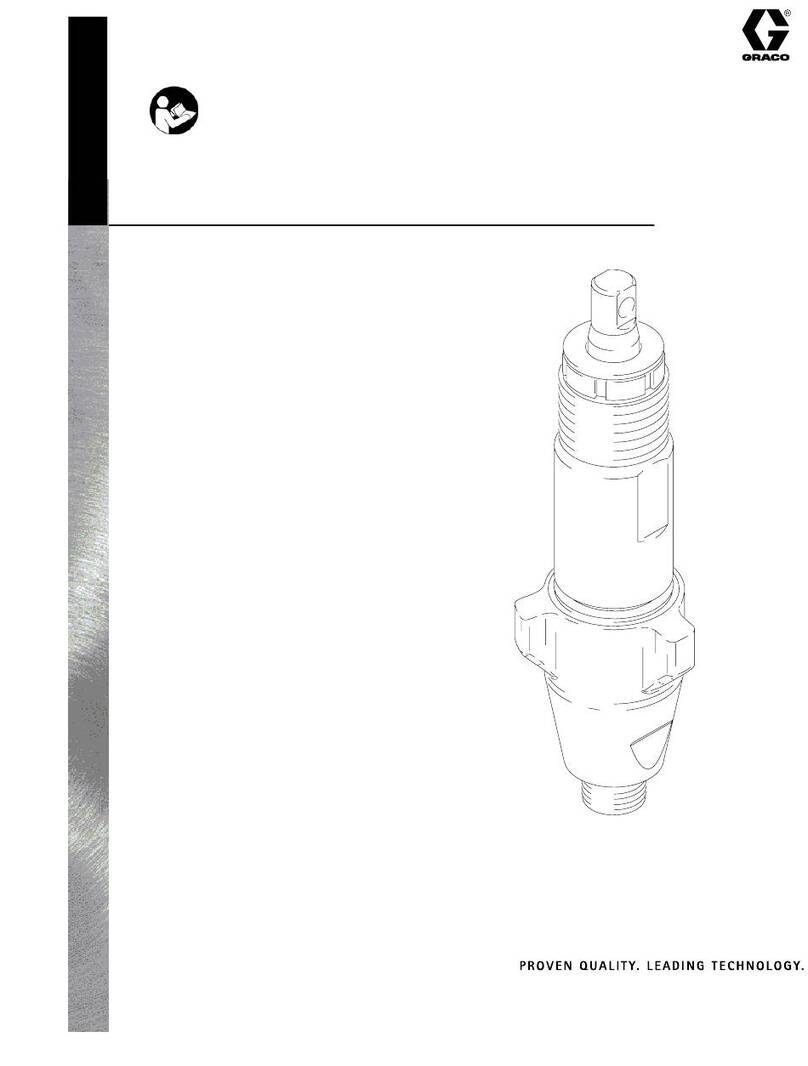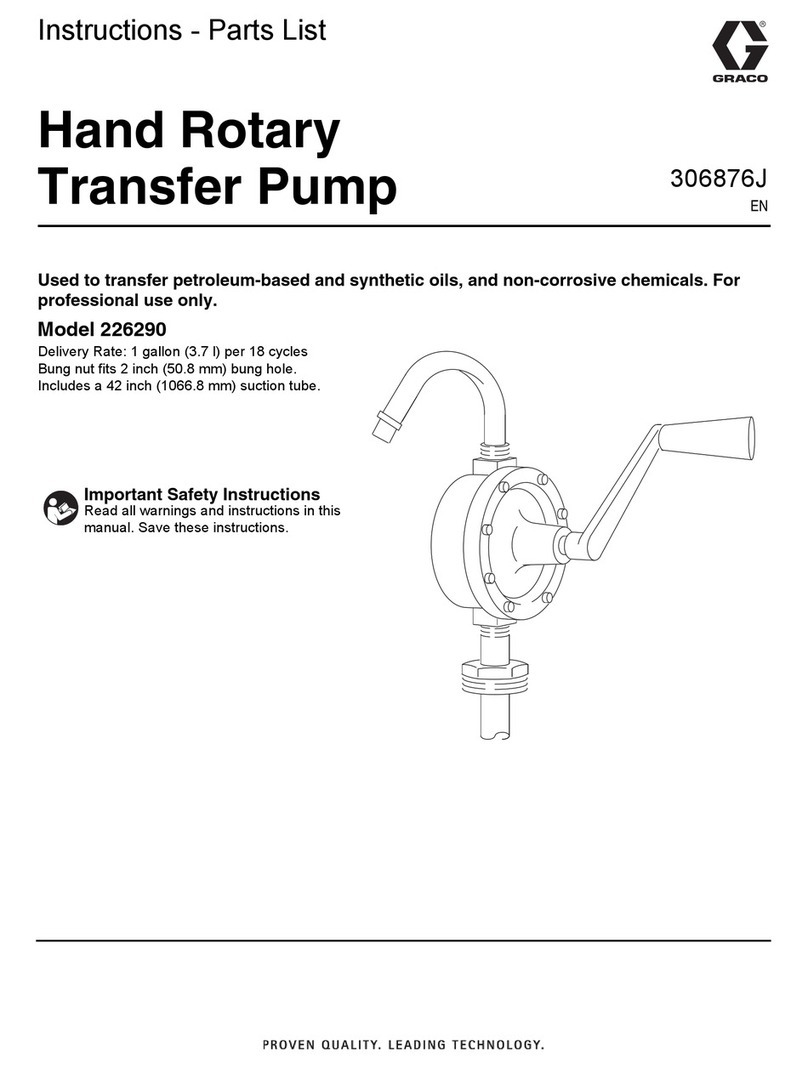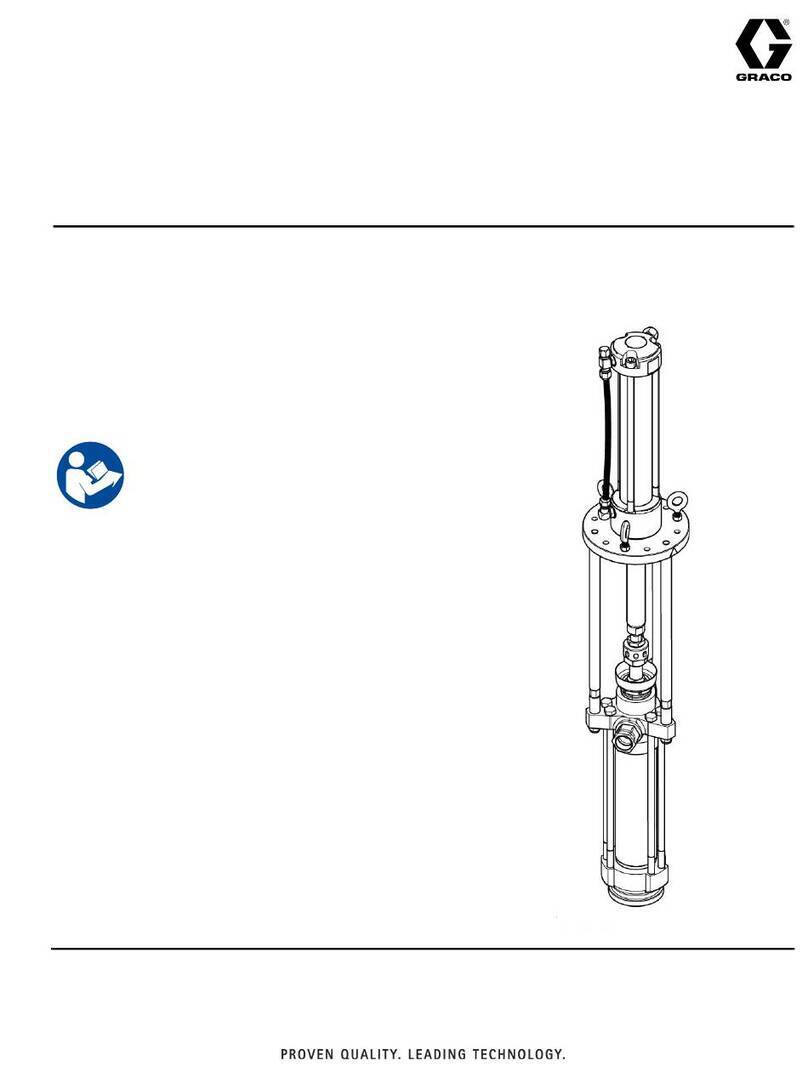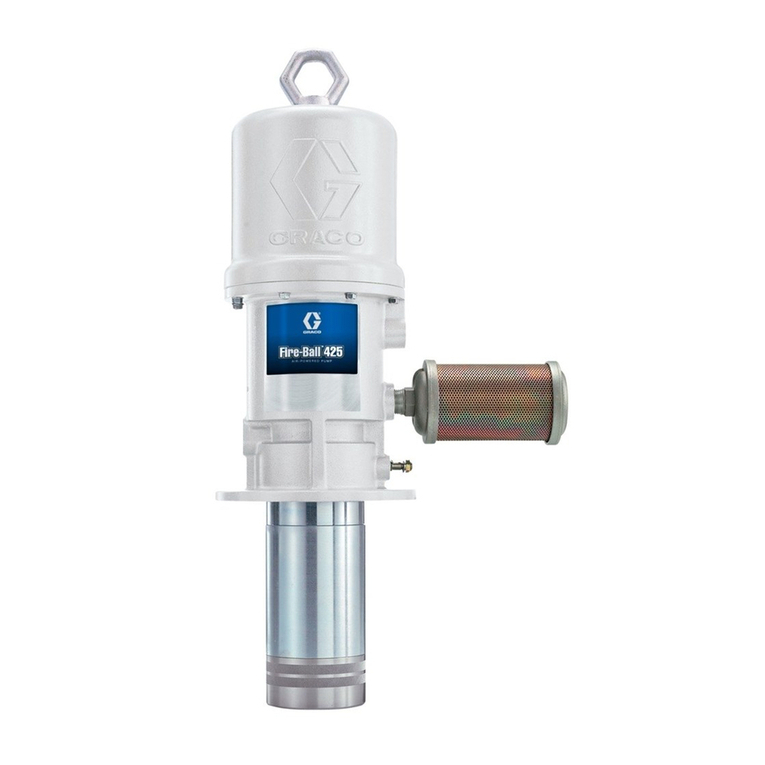
WARNING
HIGH PRESSURE SPRAY CAN CAUSE EXTREMELY SERIOUS INJURY.
FOR PROFESSIONAL USE ONLY.
OBSERVE ALL WARNINGS.
Read and understand all instruction manuals, tags, and warnings before operating equipment.
INJECTION HAZARD
Fluids under high pressure from spray or leaks can
penetrate the skin and cause extremely serious injury,
including the need for amputation.
NEVER point the spray gun at anyone or any part of the
body.
NEVER put hand or fingers over the spray tip.
NEVER try to stop or deflect leaks with your hand or
body.
AL WAYS have tip guard in place when spraying.
MEDICAL TREATMENT
If an fluid ap ears to penetrate our skin get
EbERGENC% MEDICAL CARE
j;T
ONCE:
DO NOT TREAT AS A SIMPLE CUT.
Tell the doctor exactly what fluid was injected. For
treatment instructions have our doctor call the
NATIONAL POISON 8ENTER NETWORK
(412)681-6669
AVOID COMPONENT RUPTURE
--
This pump develops 950 psi (66 bar) material pressure
at 95 psi (6.5 bar) air supply pressure. NEVER exceed
95 psi (6.5 bar) air supply pressure to pump.
Always be sure that all fluid handling components have
a maximum working pressure rating of at least 950 psi
(66
bar).
NEVER alter or modify the equipment.
Any damage to a hose can result in hose failure and
possible bodily injury or property damage. Before each
use, check entire hose for cuts, leaks, abrasion or bulg-
ing of cover or damage or movement of couplings. If
any of these conditions exist, replace the hose im-
mediately. Never use tape or any device to try to mend
the hose.
Help prevent damage to hose by handling and routing
carefully. Do not expose hose to temperatures above
180°F
(82OC)
or below
-4OOF
(-4OOC).
Do not pull
sprayer with hose.
USE EXTREME CARE WHEN CLEANING
SPRAY TIPS AND SERVICING
Before removing any part for cleaning or servicing,
always disconnect power source and carefully relieve
fluid pressure by triggering spray gun, engaging gun
safety latch and any other equipment safety locks, and
opening any drain or bleeder valves. Leave drain valve
open during servicing. Remove spray tip from gun for
cleaning.
2307-595
SPRAY GUN SAFETY ~
When spray gun is not actually spraying, always set the
gun safety latch in the horizontal or “SAFE” position,
making the gun inoperative.
DO NOT REMOVE OR MODIFY any pati of the gun.
CHECK OPERATION OF ALL GUN SAFETY
DEVICES BEFORE EACH USE.
Always remove the tip from the gun to clean it.
Be very careful when removing the spray tip or hose
from gun. A plugged line contains fluid under pressure.
Your system should have a drain valve downstream
from the pump to relieve the pressure. If you use a fluid
pressure regulator, you must install another drain valve
downstream from the regulator. If tip or line is plugged,
open the drain valve, then loosen air cap retainer or
hose coupling slightly and relieve the pressure slowly
before removing completely.
PREVENT STATIC SPARKING
Always be sure all system equipment and objects being
sprayed are properly grounded. The high velocity flow
of fluid creates static electricity. Sparks may cause fire,
explosion, or electric shock.
Use only conductive or grounded air and fluid hoses for
air-assisted airless applications. Be sure gun is ground-
ed through hose connections. Check ground continuity
in hose and equipment once a week. Overall (end to
end) resistance of unpressurized hose must not exceed
29 megohms for any coupled length or combination of
hose lengths.
Never exceed 500
ft
(150
m)
overall combined hose
length to assure electrical continuity.
When flusning equipment, remove spray tip, use the
lowest possible pressure, and maintain firm metal to
metal contact between gun and grounded metal waste
container. This reduces the chance of static sparking.
Follow the
precautions
manufacturer’s
coating and solvent
and warnings.
safety
United States Government safety standards have been
adopted under the Occupational Safety and Health Act.
These standards
-
particularly the General Standards,
Part 1910, and the Construction Standards, Part 1926
-
should be consulted in connection with your use of
air-assisted airless spray equipment.
